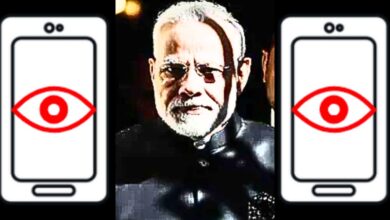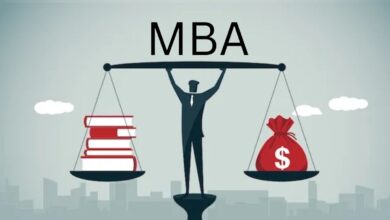School Fees: How Education In India Converted From A Fundamental Right To A Luxury?
After watching the school fee hike, sending your child to a good school sometimes feels more like paying for a luxury vacation than investing in their future. All children deserve education, but some children's parents can afford more education than others." How much education should cost and what kind of society we want to create? A country where education is a luxury rather than a right is not just compromising its democratic values—it's mortgaging its future for the profit of a few.

In a society where education is cited as the most excellent tool for equality, it’s cruelly ironic that you now must be nearly wealthy to afford it. As parents throughout India read their kid’s school fee notices, they see the gradual and painful change of education from a fundamental right to a luxury item. While government authorities and school administrators publically announce in the media that they are “watching the issue,” families are racing to figure out how to fund what was previously considered an essential requirement. Because nothing shouts “democratic future” more than ensuring that only the wealthy few have access to high-quality education?
There were reports that private schools in Delhi were raising fees, so the city’s newly elected central government said it was “closely monitoring complaints,” taking “robust steps,” and doing “surprise checks.” At first, it may sound reasonable. But once you dive deeper, it’s like the educational equivalent of sending thoughts and prayers after a disaster. Atishi, the current Delhi Leader of Opposition, has written to CM Rekha Gupta asking for an instant stop on price rises and audits of all such institutions. But while the letters fly back and forth between official desks, parents are left wondering if they should pay for their child’s education or trivial things like food and housing.
The situation in the national capital isn’t some isolated incident of educational extortion; it’s becoming a national epidemic. According to a survey conducted among 31,000 parents of school-going children across 309 districts in India, a staggering 44 % reported that their children’s school fees have risen by 50-80 % over the past 3 years. In a country where most salaries haven’t kept pace with inflation, nearly half of parents are expected to pull an extra 50-80 % out of their already stretched budgets. Now, sending your child to school is beginning to compete with buying property as a lifetime investment.

Just 1 week ago, a school belonging to a prominent educational group in Kolkata decided to throw parents in the financial mud by announcing an abrupt fee hike ranging from 61% to 75% at the start of the new academic session. They provided no prior notice to parents. It’s like visiting a restaurant, placing an order for what you think is a fair-priced meal, and then getting an almost double bill what you thought.
Hence, as schools reopen for the new academic year, parents throughout India are facing a financial nightmare.
In Hyderabad, parents have protested against schools, that demanded double the fees for lower kindergarten to class 3 admissions.
In Bengaluru, objections have been raised against several schools for increased fees for the 2025-26 academic year as if someone had determined that education should be as exclusive, costly, and only accessible to those who can pay the premium as luxury watches.
The timing of these hikes appears intentional, taking advantage of a situation in which parents have little to no choice but to obey. Sometimes, when the tuition fee rise is disclosed, parents cannot make other arrangements or look out for other educational options. It shows educational extortion: pay up, or your child’s future is at stake. Parents are already battling with job layoffs, increased taxes, and property loans, and now they must raise thousands of rupees more for school tuition. As the great philosopher Freddie Mercury once asked, “Is this the real life? Is this just fantasy?” The answer is painfully apparent for many parents caught in this financial landslide without escaping reality.
Some states like Tamil Nadu and Maharashtra have attempted to regulate school fees, while legal battles have stalled Karnataka’s efforts. In the contest between profit margins and accessible education, the lawyers are the only ones consistently coming out ahead. Meanwhile, thousands of parents are drowning in debt in their desperate quest to give their children the best educational advantage for future career prospects. One parent said, “I’m not just paying for education; I’m buying my child’s future, and apparently, the future is costly these days.”
Furthermore, the commercialisation of private education is a direct result of the deterioration of government schools. Parents feel pressured to explore private options, no matter the expense, as public schools are becoming less and less available. With its own marketing tactics, premium pricing, and exclusive “services” that allegedly justify exorbitant tuition, education has transformed from a public utility to a flourishing industry.
This situation raises a significant problem. Could we be seeing the emergence of a new educational model? As traditional schooling becomes financially untenable for many families, may physical or totally digital schools become the new standard? In such a setup, physical schools function essentially as centres for extracurricular activities, with fundamental academic instruction moving online. Would a hybrid approach offer a more flexible, accessible, and cost-effective option for students and parents? Or will it create a new digital gap, with high-quality online education becoming another luxury that only the wealthy can afford?
To understand why school fees have spiralled out of control, one must look at the fundamental shifts in how education is perceived and delivered in India. Education is not simply a huge business; it is an immense industry. India’s private school business is worth over ₹18.7 lakh crore ($225 billion) and is rapidly expanding. This is no longer simply about education; it is a textbook gold rush.
Simultaneously, public schools have been allowed to wither on the vine. Under the Modi administration, government schools have decreased by 8% over the previous decade, while private schools have increased by 14%. This is more than just a change in educational choices; it is a deliberate deconstruction of public education. When government schools are no longer feasible possibilities, parents can choose private institutions, regardless of expense. It’s similar to seeing a magic act in which the magician makes your wallet disappear while claiming it’s for your own benefit.
The corporate and political monopoly within the education sector further exacerbates the problem. Business tycoons and politicians control many private schools and see education as just another venture in their diversified portfolios. Is it any surprise that profit margins come first above accessibility when education turns into a company governed by business people? As the saying goes, “When the fox guards the henhouse, the chickens don’t stand a chance.” In this case, the henhouse is our educational system, and the chickens are our children’s futures and bank accounts!
Then there are the hidden costs like the numerous additional charges that are not included in the already exorbitant school fees. Parents are made to buy pricey books, uniforms, and supplies from select suppliers who have exclusive “arrangements” with the schools. Some institutions even charge for “Parent Orientation” sessions, effectively making parents pay to learn how much more they’ll have to pay throughout the year. It’s like being charged an entry fee to a store and then being charged again for everything you purchase inside.
Despite existing laws to curb fee hikes, weak enforcement and political interests have rendered regulation largely ineffective. After all, if politicians own private schools or have financial interests in educational institutions, can anyone stop them from optimising their profits? It’s the ultimate conflict of interest, playing out on the stage of our children’s lives and the nation’s future! George Orwell might have observed if he were writing about modern Indian education, “All children deserve education, but some children’s parents can afford more education than others.“
If you think buying a house is tough, try navigating the world of school fees. The situation is so critical that when the school sends out its fee structure, and if you’re sipping your chai, you will almost choke on your biscuit! 4 lakh/year for a school education! That’s the cost of a small car!
Sending your child to a good school sometimes feels more like paying for a luxury vacation than investing in their future. And the hidden costs? They arrive like unexpected guests at a party! For middle-class families, handling these costs may be like juggling blazing torches. Many are driven to take out loans or make difficult decisions because one cannot eat food when they cannot get a worthy education!

The societal pressure to provide the “best” education for one’s children further complicates the issue. Parents are led to believe that anything other than the most costly school is a failure on their part. It’s instructional gaslighting on a national level. “Don’t you want what’s best for your child?” is the deceitful question that pushes families into financial catastrophe. If you cannot pay these costs, the unstated suggestion is that you are failing as a parent. It’s a horrible psychological trap that plays on our strongest inclinations to provide for our children.
In the meantime, what about the quality of education being provided for these astronomical fees? In many cases, it seems inversely proportional to the cost. Teachers are often underpaid despite the high fees, classrooms are overcrowded, and the emphasis is frequently on rote learning rather than critical thinking or creativity. It’s like paying for a five-star meal and being served instant noodles—except those are your child’s future.
The worldwide pandemic and the following shift to online education exacerbated the disparity between private education’s expense and value. While providing substantially reduced services during remote study, several institutions charged full charges. Parents who questioned this practice frequently encountered bureaucratic roadblocks or covert threats regarding their child’s future at the centre. It was a sobering reminder that the customer is not always right in the field of education.
Additionally, the focus on luxurious facilities such as air-conditioned classrooms, swimming pools, and international travel—often comes at the expense of fundamental educational standards. Parents are falling for the charm as schools offer experiences rather than instruction. Education has a cost, just as entertainment. Meanwhile, dazzling amenities that appear good on a school brochure can sometimes take precedence over the fundamentals of learning, such as creativity, critical thinking, and problem-solving.
The growing inaccessibility of high-quality education is a serious betrayal of our shared ideals as a nation that takes pride in being the largest democracy in the world. It is believed that education is the great equaliser, the thing that enables people to rise beyond their natal circumstances. Instead, technology has developed into yet another instrument for maintaining the existing social systems. When high-quality education is exclusively accessible to the wealthy, social mobility is no longer an option.
So, what are our next steps? How do we make education a priority again instead of a luxury? Realising that the existing system is unfair and unsustainable is the first step. It requires political will to enforce existing regulations and create new ones that more effectively balance the legitimate needs of educational institutions with the right of all children to access quality education.
Parents, too, must resist the marketing-driven frenzy that equates expensive education with good education. Some innovative and effective learning environments are not necessarily the most costly. Parents can shift the conversation from prestige to pedagogy by demanding transparency and accountability from schools.
Ultimately, the question we must ask ourselves is how much education should cost and what kind of society we want to create. Would we want a society in which a person’s wealth determines their access to information and opportunities, or one in which every child may reach their full potential regardless of their family’s financial situation?
We are at a turning point as the cost of high-quality education continues to rise, and more families are unable to afford it. The destiny of our society as a whole, as well as the future of education in India, will depend on the course we choose.
A country where education is a luxury rather than a right is not just compromising its democratic values—it’s mortgaging its future for the profit of a few.
“Education is the most powerful weapon you can use to change the world,” as Nelson Mandela once said. It’s time to consider why we let education be used as a weapon against middle-class families’ financial stability. More significantly, how can we refocus it to create a society that is more just and equal? The only topic of education at the moment is the widening gap in parents’ financial resources.





